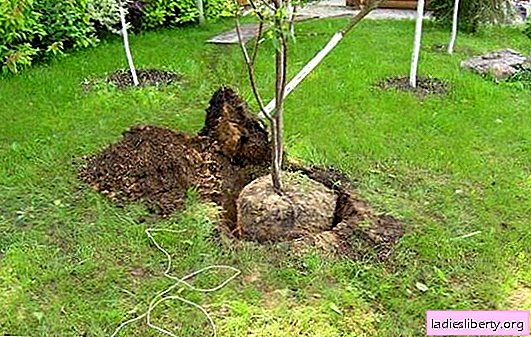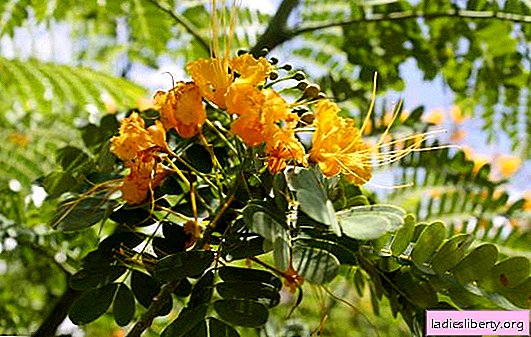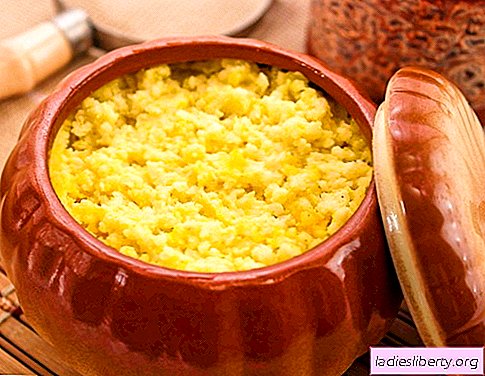
Cherry is demanding on the composition of the soil, abundantly bears fruit only on fertile soils. If during planting not all conditions for cultivation were met, then the cherry has to be transplanted.
When to transplant cherry in the fall
The best time for a cherry transplant is autumn, when the leaves are completely circled from the tree. It is not worth focusing on generally accepted recommendations, because for each region the terms will vary. Therefore, we give approximate terms favorable for work:
• Moscow region and the middle lane - finish landing by mid-October;
• Siberia, the Urals - landing is carried out only in the spring;
• Southern regions - they plan to land from mid-October to mid-November.
You need to take into account both the air temperature and the plant variety. The temperature on the street should not fall below + 10 ° C. But the main rule is to finish the work two weeks before the alleged frost. If the garden is not frost-resistant varieties of cherries, then it is better to postpone the transplant until spring.
Important! When time for planting is missed, it is better to dig a seedling in a trench until spring.
Autumn Cherry Transplant Tips and Rules
To transplant a tree that is already growing in the garden and not destroy it, you need to take into account all the nuances.
Firstly, it is better in the new place to take root overgrowth, in which the root system has not yet been strengthened. The chances of such a plant are higher than that of an adult cherry. The old tree, even if it takes root, will certainly not bear fruit. It was noticed that trees under the age of three years successfully transplant.
During planting, it is important to create a balance between the crown and the root system. For this, tree branches are pruned. This procedure allows the seedling to adapt quickly to a new place.
Landing is carried out from orientations to the side of the world. Planted as a tree grew earlier. For this, the branches are marked.
Early ripening varieties tolerate the autumn transplant best, but late cherries must be left until spring.
Important! Felt cherries are not transplanted at all. The culture does not take root well and refuses to bear fruit. Even young shrubs do not touch. In case of emergency, annual seedlings can be planted.
Autumn Cherry Transplant Technology
Before planting, the roots of the seedling are inspected, all damaged and dry areas are removed.
If the seedling is not planted immediately and its roots are dried, then they need to be soaked in water for about 12 hours. Submerge the tree in a bucket so that 1/3 of the trunk is covered with water.
Important! If you add a growth stimulant to the water, this will increase the chances of rooting.
For a transplant choose a warm day and follow the instructions:
1. A landing pit is prepared with a size of 50 x 60 cm.
2. The bottom is well drained with broken bricks.
3. Fertile soil is mixed with a glass of ash, a bucket of compost or mature manure.
4. Part of the earth is poured into a pit, a seedling is planted, roots are straightened, and the remaining soil is covered.
5. The soil is compacted, watered abundantly.
6. A peg is placed next to the barrel and a cherry is tied.
During planting, monitor the condition of the root neck. It should be 3 - 5 cm above the soil level. If, after shrinkage of the soil, the root neck is not in place, then it must be corrected, otherwise the seedling may rot.
Advice! Do not use nitrogen fertilizers when planting cherries; the tree will not develop well.
With the advent of cold weather, the soil around the trunk is mulched with humus or peat. This will help to maintain moisture and protect the root system from frost.
Choosing a place and preparing the soil for planting cherries
When choosing a place for planting cherries, you need to take into account the neighborhood with other trees. For cherries, good neighbors would be:
• apple trees;
• plums;
• pears.
But between them and cherry seedlings must be left at least 3 m.
The root system of cherries does not like getting the roots wet, so it is located on a site where groundwater is low. You do not need to neglect this rule, otherwise the seedling will die.
A good place for cherries is the south or southwest side of the site. The place must be protected from winds and drafts.
Fruits cherry only on fertile soil with a neutral reaction. If the soil is acidic, it is necessary to add slaked lime to it, since in acidic soil the cherry grows worse and does not bear much fruit.
Important! Before planting, the soil is well dug up, all weeds and the remains of other plants are removed.
How to care for cherries after transplantation so that it bears fruit
If the cherry is transplanted correctly in the fall, then it will bear fruit well. But abundant yields can be achieved only by top dressing and good care.
1. After transplanting, the tree is not fed for the first year, it’s good enough to refuel the planting pit.
2. In the second year, cherries are fed with mineral complexes and humus.
3. At the end of autumn, I water the tree plentifully, this is necessary for long-term nutrition of the tree. On one plant spend up to 70 liters of water.
Do not forget about mulching the soil so that the soil does not dry out, does not freeze.
Cons of Autumn Planting Cherry
Autumn planting of cherries is distinguished by a prostate and significantly saves time during spring work. But this method also has disadvantages. This is a risk of freezing of the root system, especially if the temperature drops sharply. In winter, branches and tree trunks may suffer from icing.
In addition, rodents can harm a tree in winter. Therefore, young seedlings need to be protected. The talker from clay and mullein will help scare away rodents. The mixture is applied with a brush to the tree trunk.
Transplanting cherries in the fall is a painstaking task and success in it depends on the work done. If everything is done according to the instructions, the seedling will take root well and will quickly start growing. The cherry will begin to bear fruit a few years after the transplant.











